NIF & PS People - 2018
September
Researchers Receive Early and Mid-Career Awards
NIF&PS Scholar Shows Spark for Laser Experiments
NIF&PS Employees Capture LLNL Awards
NIF & Photon Science individuals and teams received 2018 Operational Excellence, Excellence in Science & Technology, and Publications awards in recognition of their important accomplishments that contribute to the successful execution of the Lab’s missions.
On Sept. 5, the Director’s Office presented the 11th annual Institutional Operational Excellence Awards to 170 employees divided among nine teams. Each winner received a commemorative coin, and for some, a cash award (managers and supervisory-level honorees receive recognition but no monetary award).
 The commemorative coin awarded to recipients of the 2018 Institutional Operational Excellence Award. Credit: James Wickboldt and John Jett
The commemorative coin awarded to recipients of the 2018 Institutional Operational Excellence Award. Credit: James Wickboldt and John Jett Each directorate is asked to submit nominations that support institutional goals and have significant, positive impact on the Laboratory’s work. The NIF & Photon Science award went to the team responsible for developing the capability to perform one cryogenic layer shot per week on NIF.
Growing the wafer-thin layer of cryogenically cooled, solid deuterium-tritium (DT) fuel in the target capsule is one of the most demanding aspects of preparing targets for NIF ignition experiments. Only 69 microns wide—about two-thirds the average width of a human hair—and frozen to 18.5 kelvins (minus-426 degrees Fahrenheit), the “DT ice” layer must be extremely smooth and free of grooves or other defects before the target can be approved for use in an experiment.
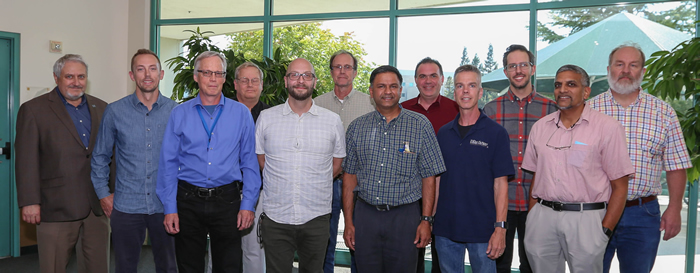 Cryogenic Layer Capability Team members with LLNL Director Bill Goldstein (left) (from left): Chris Czajka, Curtis Walters, Tom Kohut, Travis Briggs, Bob Burr, Suhas Bhandarkar, Edgar DeGiovanni, Kevin Fournier, Derrick Lassle, Tayyab Suratwala, and Jim Sater.
Cryogenic Layer Capability Team members with LLNL Director Bill Goldstein (left) (from left): Chris Czajka, Curtis Walters, Tom Kohut, Travis Briggs, Bob Burr, Suhas Bhandarkar, Edgar DeGiovanni, Kevin Fournier, Derrick Lassle, Tayyab Suratwala, and Jim Sater. Cryogenically cooling the fuel to just below the freezing point of hydrogen, which changes hydrogen’s phase from a gas to a liquid and finally to a solid, enhances the density of the fuel and improves the chances of achieving the required density for ignition. The team implemented a broad array of improvements in equipment, experimental designs, processes, training, and facility scheduling to increase the number of NIF cryogenic layered experiments.
Recipients were Suhas Bhandarkar, Travis Briggs, Robert Burr, Christine Choate, Chris Czajka, Edgar Degiovanni, Kevin Fournier, Jon Fry, Chuck Gibson, Gayatri Gururangan, Thomas Kohut, Derrick Lassle, Abbas Nikroo, Thomas Parham, James Sater, Tayyab Suratwala, Richard Town, Curtis Walters, and Pam Whitman.
Director’s Science and Technology Awards
Lab Director Bill Goldstein and Deputy Director for Science and Technology Pat Falcone presented the 2018 S&T and Excellence in Publication awards to 18 project teams, conference presenters and journal authors for their exceptional endeavors in science and technology.
The Director’s S&T Awards Program was implemented in 2000 to acknowledge, celebrate, and reward recent significant scientific and technical accomplishments by Laboratory staff. NIF&PS recipients were:
First Experimental Evidence for Superionic Water
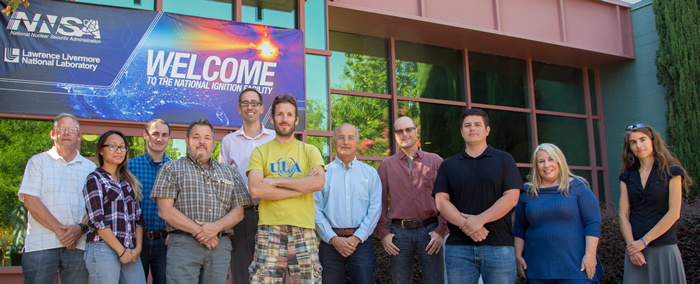 Members of the Superionic Water Team (from left): Timothy Uphaus, Renee Sharlaine Posadas, Eric Folsom, James Emig, Dayne Fratanduono, Marius Milot, Peter Celliers, Sébastien Hamel, Antonio Correa Barrios, Carol David, and Federica Coppari.
Members of the Superionic Water Team (from left): Timothy Uphaus, Renee Sharlaine Posadas, Eric Folsom, James Emig, Dayne Fratanduono, Marius Milot, Peter Celliers, Sébastien Hamel, Antonio Correa Barrios, Carol David, and Federica Coppari. The team developed the first experimental evidence that water may become “superionic” when heated to several thousand degrees at high pressure, similar to the conditions inside giant planets like Uranus and Neptune. This exotic state of water is characterized by liquid-like hydrogen ions moving within a solid lattice of oxygen—in effect, water behaving as both a liquid and a solid simultaneously.
Team members are Marius Millot, Sébastien Hamel, Peter Celliers, Federica Coppari, Dayne Fratanduono, Damian Swift, Jon Eggert, Antonio Correa Barrios, Carol David, James Emig, Eric Folsom, Renee Sharlaine Posadas, and Timothy Uphaus of LLNL; Raymond Jeanloz of UC Berkeley; and Rip Collins and J. Ryan Rygg of the University of Rochester.
Development and Fielding of a High-energy X-ray Backlighter for NIF
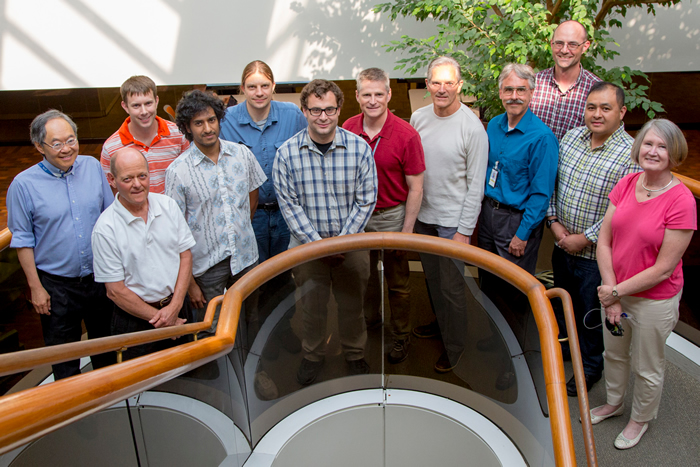 Members of the High-Energy X-ray Backlighter Team (from left): Front Row: Thomas Dittrich, Shahab Khan, David Martinez, Stephan MacLaren, Riccardo Tommasini, David Palmer, Elvin Monzon, and Sharon Glendinning; Back Row: Warren Hsing, Jonathan Ward, Thomas Zobrist, and Shon Prisbrey.
Members of the High-Energy X-ray Backlighter Team (from left): Front Row: Thomas Dittrich, Shahab Khan, David Martinez, Stephan MacLaren, Riccardo Tommasini, David Palmer, Elvin Monzon, and Sharon Glendinning; Back Row: Warren Hsing, Jonathan Ward, Thomas Zobrist, and Shon Prisbrey. The team developed hard x-ray point projection sources generated by NIF’s Advanced Radiographic Capability laser system to record high spatial- and temporal-resolution radiographs of a driven high-energy-density target.
Team members are David Martinez, Thomas Dittrich, Sharon Glendinning, Mark Hermann, Shahab Khan, Daniel Kalantar, Riccardo Tommasini, Richard Seugling, Jonathan Ward, Elvin Monzon, Matthew Arend, Christopher Santos, Warren Hsing, Abbas Nikroo, Stephan MacLaren, Kevin Baker, Danielle Hare, Shannon Ayers, Shon Prisbrey, Alan Wan, Ronald Sigurdsson, Jared Okui, Thomas Zobrist, Michael Rubery, and David Palmer.
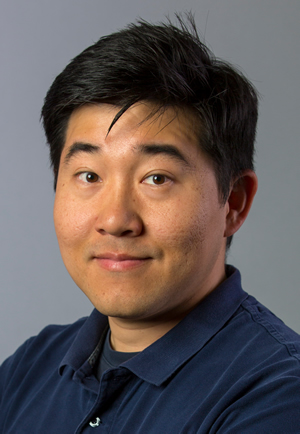 Jae-Hyuck Yoo
Jae-Hyuck Yoo Deputy Director for Science and Technology Excellence in Publication Awards
Postdocs
“Lifetime Laser Damage Performance of β-Ga2O3 for High Power Applications,” by Jae-Hyuck Yoo, published on March 20, 2018, in APL Materials.
Yoo’s paper reported on systematic laser damage performance tests that established that gallium oxide (Ga2O3) has the highest lifetime optical damage performance of any conductive material measured to date, above 10 joules per square centimeter. This has direct implications for its use as an active component in high-power laser systems and may give insight into its utility for high-power switching applications.
Team Awards
“Thermonuclear Reactions Probed at Stellar-core Conditions with Laser-based Inertial-confinement fusion,” published on August 7, 2017, in Nature Physics. 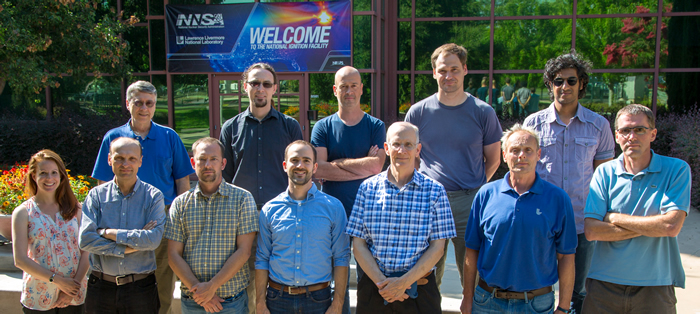 Members of the Thermonuclear Reactions Team (from left): Front row: Laura Berzak Hopkins, Vladimir Smalyuk, Charles Yeamans, Chris Weber, Bruce Remington, Dean Holunga, and Laurent Divol; Back row: Tom Parham, Dan Casey, Sebastien Le Pape, Dan Sayre, and Shahab Khan.
Members of the Thermonuclear Reactions Team (from left): Front row: Laura Berzak Hopkins, Vladimir Smalyuk, Charles Yeamans, Chris Weber, Bruce Remington, Dean Holunga, and Laurent Divol; Back row: Tom Parham, Dan Casey, Sebastien Le Pape, Dan Sayre, and Shahab Khan.
The paper, a collaboration among LLNL, MIT, Los Alamos National Laboratory (LANL), and Ohio University, reported on the first thermonuclear measurements of nuclear reaction cross-sections—a quantity that describes the probability that reactants will undergo a fusion reaction—in high-energy-density plasma conditions that are equivalent to the burning cores of giant stars, 10 to 40 times more massive than the sun.
Authors are Daniel Casey, Daniel Sayre, Vladimir Smalyuk, Christopher Weber, Robert Tipton, Jesse Pino, Gary Grim, Bruce Remington, David Dearborn, Robin Benedetti, Robert Hatarik, Nobuhiko Izumi, James McNaney, Tammy Ma, Stephan MacLaren, Jay Salmonson, Shahab Khan, Arthur Pak, Laura Berzak Hopkins, Sebastien Le Pape, Brian Spears, Nathan Meezan, Laurent Divol, Charles Yeamans, Joseph Caggiano, Dennis McNabb, Dean Holunga, Marina Chiarappa-Zucca, Thomas Kohut and Thomas Parham of LLNL; Maria Gatu Johnson and Johan Frenje of MIT; Carl Brune of Ohio University; and George Kyrala of LANL.
Researchers Receive Early and Mid-Career Awards
Seven LLNL researchers working in or for NIF & Photon Science programs are among fifteen Lab scientists and engineers named to the Laboratory’s fourth annual Early and Mid-Career Recognition (EMCR) Program.
The EMCR Program recognizes scientific and technical accomplishments, leadership and future promise demonstrated by LLNL scientists and engineers in their early to mid-careers—from five to 20 years since they received their most recent degree. Winners receive a cash award and institutional funding approximately equivalent to 20 percent support for one year to pursue research activities in their areas of interest.
The 2018 NIF&PS EMCR winners are:
Five to 10 years
Daniel Casey
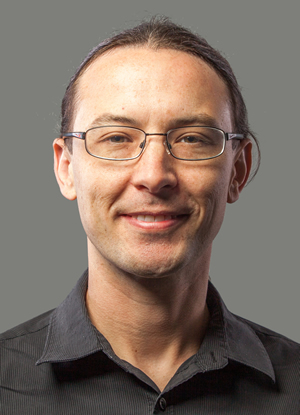 Daniel Casey
Daniel Casey After arriving at LLNL, Casey became the lead experimentalist on several campaigns on NIF and the OMEGA Laser at the University of Rochester supporting National Nuclear Security Administration programs. He worked on developing and fielding the NIF hydro-growth radiography (HGR) experimental capability and on the inertial confinement fusion (ICF) “adiabat-shaping” campaign. Both HGR and adiabat-shaped experiments demonstrated the importance of hydrodynamic instabilities for NIF implosion performance at high compression. Casey also has used nuclear experimental data to study stellar-core conditions.
Casey recently was appointed experimental co-lead of the Bigfoot and Hybrid B campaigns in the ICF program. This effort has included developing a new high-areal-density hot spot concept to study hot spot formation and attempt to develop a high-adiabat platform with predictable performance. The stagnation campaign also has successfully performed experiments that have quantified the repeatability of NIF’s record-performance high-foot implosions and tested the sensitivity of that platform to intentional perturbations in drive-symmetry, layer-symmetry and layer-age.
“I am so very honored and humbled to be among the awardees this year,” Casey said. “I have had the great fortune to work with many extraordinarily talented people here at the Laboratory, and this award is simply a reflection of that opportunity.”
 Rebecca Dylla-Spears
Rebecca Dylla-Spears Rebecca Dylla-Spears
Rebecca Dylla-Spears’ contributions range from NIF target capabilities, which led to the first layered targets for ICF experiments, to recent achievements in additive manufacturing of optics. She has worked on understanding mechanisms for colloid stabilization in slurries and the hydrogen supercooling kinetics on templated materials.
A technical group leader at NIF&PS, her work to develop additively manufactured optics containing functional gradients will enable new optical materials and components that will enable lighter, more compact systems of interest in defense, energy, space, and global security applications.
Andrea Kritcher
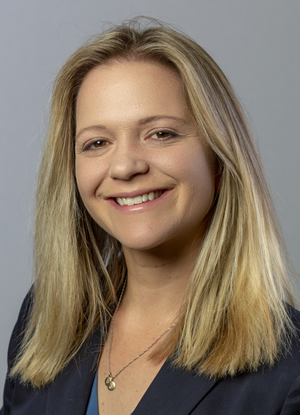 Andrea Kritcher
Andrea Kritcher Andrea Kritcher is a designer in the ICF program, joining the Lab as a staff member in 2012. She was the lead on developing NIF’s best 2D integrated hohlraum-capsule post-shot models for the high-gas-fill hohlraum high-foot implosion database and is an expert on questions of symmetry control in hohlraums. She was the developer of the 2D integrated capsule-hohlraum HYDRA “common” model for integrated experiments that was the critical part of a major milestone for the ICF Program in 2017.
Kritcher is design lead of the ICF Program’s new “hybrid” implosion design work, an effort that attempts to take the best elements of past designs and utilize data-based understanding of the key physics factors that control symmetry and performance in order to position the ICF program to field large-scale ignition-relevant implosions that utilize NIF’s full power and energy capacity.
“I am very honored to receive this award and thankful for the unexpected recognition, especially considering the multitude of intelligent and hardworking people here at the Laboratory,” Kritcher said. She is brainstorming about how she’d like to use her additional funding. “In addition to possible research projects, I am also considering taking advantage of this time to develop my leadership skills by participating in LLNL-sponsored programs,” she said.
Eleven to 15 years
Daniel Clark
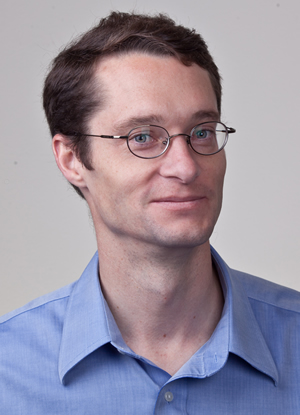 Daniel Clark
Daniel Clark Daniel Clark contributes to the ICF program. He began at LLNL studying hydrodynamic instabilities in ICF capsule implosions. During the National Ignition Campaign (NIC) at the NIF facility, Clark developed the standard modeling methodology for capsule simulations of NIF experiments. He developed a state-of-the-art, high-resolution 3D model of NIC implosions, incorporating all known sources of hydrodynamic perturbation and drive asymmetry and models of the later high-foot implosions, explaining their performance improvements. His work continues to guide implosion designs within the ICF Program.
“I’m deeply honored to receive this award,” Clark said. “I’ve always considered it a privilege to work with so many exceptional colleagues and such state-of-the-art facilities as we have here at LLNL. To be recognized in this way is, however, especially gratifying.”
Clark plans to more fully explore the possibility of short-wavelength hydrodynamics in NIF hohlraums using the best simulation tools available at LLNL. In particular, he will use the AMR and mix model capabilities of LLNL’s ARES code.
Michael Stadermann
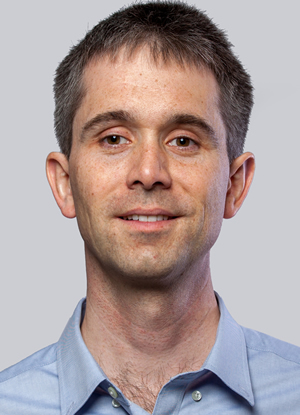 Michael Stadermann
Michael Stadermann Michael Stadermann has developed many enabling technologies as the target fabrication S&T leader, responsible for turning high energy density and ICF target designs into reality. His efforts have led to obtaining critical physics data in key experiments on NIF.
Stadermann is an expert on the fabrication, characterization, and application of the ultrathin polymer films, or “tents,” that support the target capsule in the hohlraum. He defined and commissioned the initial (45-nanometer) and current state-of-the-art (15-nanometer) tent fabrication processes.
He also has guided and contributed to efforts to minimize the tents’ adverse effects on NIF implosions or to replace them with alternative support methods. He has contributed to the development of low-density foam liners for hohlraums and to efforts to improve beryllium and high-density carbon (diamond) capsules.
Stadermann also was the principal investigator for a recently concluded Laboratory Directed Research and Development (LDRD) project aimed at advancing the science of fabrication and the characterization of the mechanical performance of ultrathin films. He developed methodologies to measure stress/strain curves for ultra-thin films, which he then applied to the development of cross-linked and graphene composite films. The LDRD project resulted in an R&D 100 Award from R&D Magazine last year. He also maintains an active scientific presence extending his carbon nanotube research into capacitive desalination and energy storage.
“I feel excited and honored that my work at the Lab is recognized with this prestigious award,” he said, “and I want to thank all of the people who have contributed and made this possible.”
Staderman plans to continue his desalination work.
Sixteen to 20 years
Laurent Divol
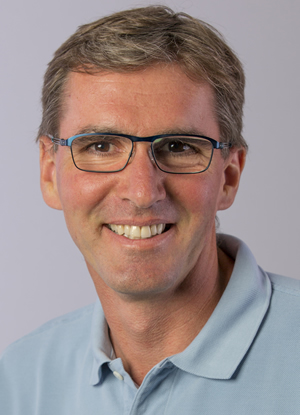 Laurent Divol
Laurent Divol Laurent Divol is a leader in ICF and laser-plasma physics. After joining LLNL in 2001, Divol led projects to benchmark laser-plasma interaction modeling capabilities against experiments for indirect-drive ICF in preparation for the first NIF experiments. These efforts combined experimental work at some of the major laser facilities in the United States (the OMEGA, Janus and Trident lasers) with theoretical and computational work.
Since 2012, Divol has focused his efforts on improving ICF implosion performance by delivering more laser energy into the hohlraum and onto the fusion capsule. In particular, he is credited with the use of low-gas-fill hohlraums on NIF after pushing the concept from a diagnostic calibration platform (the “indirectly-driven exploding pusher”) to a major design now adopted by all ICF campaigns—a design that achieved the highest fusion energy to date on NIF.
“I am grateful to the Lab for this opportunity,” Divol said. “After spending most of my career thinking about lasers, plasmas and inertial confinement fusion, I feel ready to use the time offered to learn about something radically different, knowing that this Laboratory’s environment is the perfect place for such an endeavor.
“Climate modeling, artificial intelligence, more down-to-earth applications come to mind. Now the hard part is to choose. At this point, it is more ‘open my mind’ than ‘career change,’ which I think is in line with the goals of such an award.”
Selim Elhadj
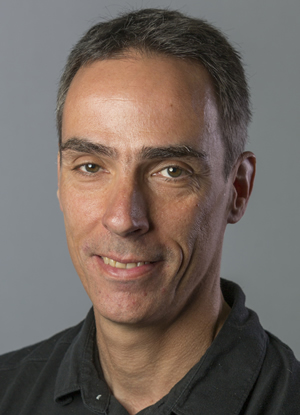 Selim Elhadj
Selim Elhadj Selim Elhadj’s contributions are in the area of the science and technology of optical materials for high-performance lasers and gas phase-based approaches to additive manufacturing of metals impacting Laboratory missions in the NIF&PS and Weapons and Complex Integration directorates and materials capabilities in Physical and Life Sciences.
Elhadj’s LDRD work on infrared laser-based mitigation of damage sites on fused silica optics helped gain a fundamental understanding of laser-driven surface modification of wide gap materials. It helped to clarify the factors necessary for a successful damage mitigation strategy, which was implemented in the NIF optics recycle loop, a large optics management strategy that allows NIF to operate daily at the required shot rate and energy.
Recently his LDRD team used experimentally validated molecular dynamics simulations to understand dislocation dynamics in gold nanoparticle thin films as part of a wider study to explore high-damage-threshold transparent conductors. As a result of this research, new devices with enhanced performance (high-energy optical switching and modulation) can be addressed to continue pushing the limits of optoelectronic devices used in high-power optical and electrical systems. The team recently demonstrated the highest optical damage performance of any known thin transparent conductive films.
“I feel very honored by this recognition considering the caliber of scientists and engineers at LLNL,” Elhadj said. “I personally recognize the role of LLNL as an institution that provides opportunities for growth, and especially my colleagues, postdocs and students, without whom I wouldn’t have had this opportunity for my work and contributions to be recognized. An individual recognition for what amounts to a collective effort over the years.”
Elhadj plans to explore the possibility of using a laser-based approach for defect reduction and annealing in semiconductors used for radiation-voltaics to extend their lifetime in long-lasting batteries.
NIF&PS Scholar Shows Spark for Laser Experiments
In his spare time, Florida A&M student Jerry Clark figured out how to fix his school’s spheromak fusion reactor, which went unused because one of the diodes would fail during experiments.
After reading the specs and a paper on the device’s design, he concluded there wasn’t enough downward compression on the diodes.
“So, I designed new plates to hold the diodes to compress them more,” he said. “That allowed it to fire without blowing up the diodes.”
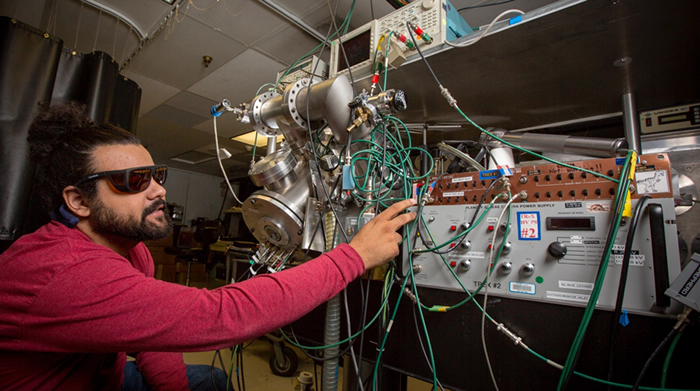 NIF&PS Summer Scholar Jerry Clark examines an x-ray streak camera with the Callisto laser inside LLNL’s Jupiter Laser Facility. Credit: Jason Laurea
NIF&PS Summer Scholar Jerry Clark examines an x-ray streak camera with the Callisto laser inside LLNL’s Jupiter Laser Facility. Credit: Jason Laurea His initiative demonstrated the kind of adaptability that helped lead the 27-year-old Clark to LLNL as a NIF & Photon Science Summer Scholar.
“Experimentalists have to be good in terms of text books, but also have to have an ability to make things work, and he has that extra spark,” said NIF Physicist Ronnie Shepherd, Clark’s Lab mentor.
“One of the things that I look for in training students is how well they work in the laboratory, how quickly they adapt to problems, which are always happening in experiments, how quickly you can adjust and recover,” Shepherd said. “And he does a very good job of that.”
Clark arrived in May and is on an extended stay at the Lab to work on collaborations between NIF and two fusion research projects from outside universities.
One is a followup to Colorado State University experiments, led by Professor Jorge Rocca, using ultra-fast laser pulses to directly heat targets that are arrays of deuterated polyethylene nanowire. Clark is designing experiments that will measure the time-dependent temperature and density of those targets. He’ll likely travel to that school in October.
Radiative Collapse
He’s also working with researchers at Cornell College who are studying the physics of the radiative collapse of plasma being squeezed by a magnetic field. Clark will be using a lab-modified x-ray streak camera (Shepherd calls it “the world’s fastest” of its kind) to measure rising temperatures and densities that should provide signatures of the radiative collapse. He’ll probably head to Cornell in December or January.
Both topics were new to Clark, who pointed to a drawer in his desk to explain how he got up to speed.
“The whole bottom drawer is filled with books on high energy density physics and spectroscopy,” he said.
As a youngster growing up in Miami, Clark wanted to work for an outfit with major facilities in another part of Florida—NASA. That made his LLNL tasks this year particularly compelling because “those things are important when you deal with stars and stellar interiors. The luminosity of the star is determined by the opacity of the materials in the star. And the radiation transfer is related to the cooling of the star.”
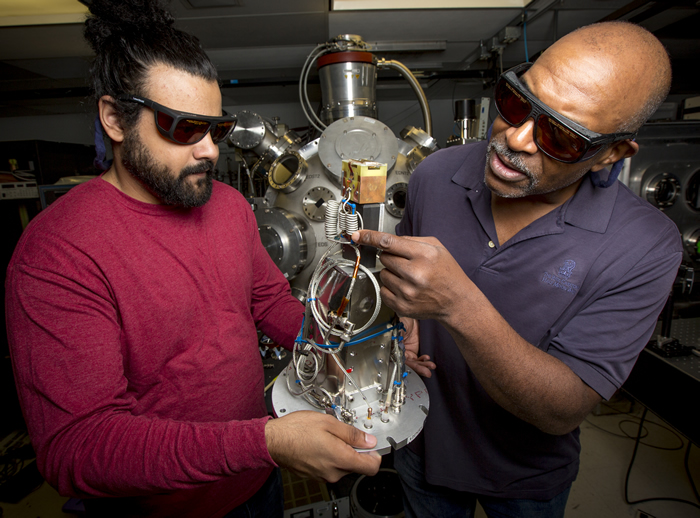 Clark and mentor Ronnie Shephard prepare for tests on the x-ray streak camera at the Jupiter Laser Facility. Credit: Jason Laurea
Clark and mentor Ronnie Shephard prepare for tests on the x-ray streak camera at the Jupiter Laser Facility. Credit: Jason Laurea He had always liked chemistry and math, which in a roundabout way led him to physics. “When I went to college, chemistry majors had to take a lot of biology and I wasn’t interested in that at all,” he said. “So, I took physics. That’s like math and chemistry without the biology. I enjoyed it, so I stuck with it.”
He’s been a research assistant at Florida A&M’s Center for Plasma Science and Technology (CePaST), where he worked on the school’s Spheromak Fusion Reactor. He also has operated a compact neutral particle analyzer at the University of Wisconsin as part of a collaboration with Florida A&M.
In 2014, Clark was an LLNL summer intern in computational chemistry and materials science. After he told Shepherd and inertial confinement fusion physicist Bruce Remington how he revitalized the Florida A&M spheromak, they encouraged him to return to the Lab.
Shepherd said Clark could potentially work on his PhD thesis while at the Lab. That would be fine with Clark, who is excited about his upcoming physics experiments.
“If you have a question you want to answer, a good starting place is always physics,” he said.
—Benny Evangelista




